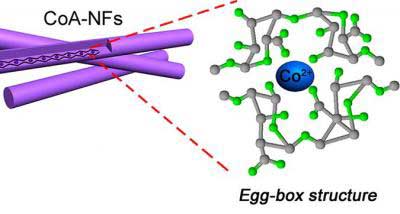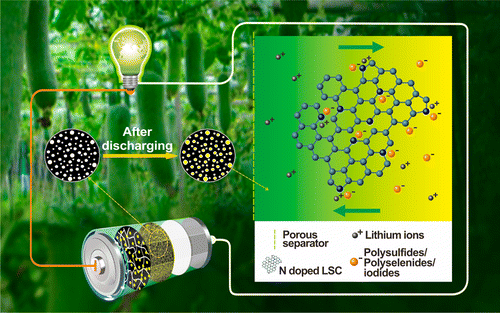Much like the gold rush in North America in the 1800s, people are going out in droves searching for a different kind of precious metal, graphite. The thing your third grade pencils were made of is now one of the hottest commodities on the market. This graphite is not being mined by your run-of-the-mill old-timey soot covered prospectors anymore. Big mining companies are all looking for this important resource integral to the production of lithium ion batteries due to the rise in popularity of electric cars. These players include Graphite Energy Corp. (OTC: GRXXF) (CSE: GRE), Teck Resources Limited (NYSE: TECK), Nemaska Lithium (TSX: NMX), Lithium Americas Corp. (TSX: LAC), and Cruz Cobalt Corp. (TSX-V: CUZ) (OTC: BKTPF).
These companies looking to manufacturer their graphite-based products, have seen steady positive growth over the past year. Their development of cutting-edge new products seems to be paying off. But in order to continue innovating, these companies need the graphite to do it. One junior miner looking to capitalize on the growing demand for this commodity is Graphite Energy Corp.
Graphite Energy is a mining company, that is focused on developing graphite resources. Graphite Energy’s state-of-the-art mining technology is friendly to the environment and has indicate graphite carbon (Cg) in the range of 2.20% to 22.30% with average 10.50% Cg from their Lac Aux Bouleaux Graphite Property in Southern Quebec [Canada].
Not Just Any Graphite Will Do
Graphite is one of the most in demand technology metals that is required for a green and sustainable world. Demand is only set to increase as the need for lithium ion batteries grows, fueled by the popularity of electric vehicles. However, not all graphite is created equal. The price of natural graphite has more than doubled since 2013 as companies look to maintain environmental standards which the use of synthetic graphite cannot provide due to its pollutant manufacturing process. Synthetic graphite is also very expensive to produce, deriving from petroleum and costing up to ten times as much as natural graphite. Therefore manufacturers are interested in increasing the proportion of natural graphite in their products in order to lower their costs.
High-grade large flake graphite is the solution to the environmental issues these companies are facing. But there is only so much supply to go around. Recent news by Graphite Energy Corp. on February 26th [2018] showed promising exploratory results. The announcement of the commencement of drilling is a positive step forward to meeting this increased demand.
Everything from batteries to solar panels need to be made with this natural high-grade flake graphite because what is the point of powering your home with the sun or charging your car if the products themselves do more harm than good to the environment when produced. However, supply consistency remains an issue since mines have different raw material impurities which vary from mine to mine. Certain types of battery technology already require graphite to be almost 100% pure. It is very possible that the purity requirements will increase in the future.
Natural graphite is also the basis of graphene, the uses of which seem limited only by scientists’ imaginations, given the host of new applications announced daily. In a recent study by ResearchSEA, a team from the Ocean University of China and Yunnan Normal University developed a highly efficient dye-sensitized solar cell using a graphene layer. This thin layer of graphene will allow solar panels to generate electricity when it rains.
Graphite Energy Is Keeping It Green
Whether it’s the graphite for the solar panels that will power the homes of tomorrow, or the lithium ion batteries that will fuel the latest cars, these advancements need to made in an environmentally conscious way. Mining companies like Graphite Energy Corp. specialize in the production of environmentally friendly graphite. The company will be producing its supply of natural graphite with the lowest environmental footprint possible.
From Saltwater To Clean Water Using Graphite
The world’s freshwater supply is at risk of running out. In order to mitigate this global disaster, worldwide spending on desalination technology was an estimated $16.6 billion in 2016. Due to the recent intense droughts in California, the state has accelerated the construction of desalination plants. However, the operating costs and the impact on the environment due to energy requirements for the process, is hindering any real progress in the space, until now.
Jeffrey Grossman, a professor at MIT’s [Massachusetts Institute of Technology, United States] Department of Materials Science and Engineering (DMSE), has been looking into whether graphite/graphene might reduce the cost of desalination.
“A billion people around the world lack regular access to clean water, and that’s expected to more than double in the next 25 years,” Grossman says. “Desalinated water costs five to 10 times more than regular municipal water, yet we’re not investing nearly enough money into research. If we don’t have clean energy we’re in serious trouble, but if we don’t have water we die.”
Grossman’s lab has demonstrated strong results showing that new filters made from graphene could greatly improve the energy efficiency of desalination plants while potentially reducing other costs as well.
Graphite/Graphene producers like Graphite Energy Corp. (OTC: GRXXF) (CSE: GRE) are moving quickly to provide the materials necessary to develop this new generation of desalination plants.
Potential Comparables
Cruz Cobalt Corp. (TSX-V: CUZ) (OTC: BKTPF) Cruz Cobalt Corp. is cobalt mining company involved in the identification, acquisition and exploration of mineral properties. The company’s geographical segments include the United States and Canada. They are focused on acquiring and developing high-grade Cobalt projects in politically stable, environmentally responsible and ethical mining jurisdictions, essential for the rapidly growing rechargeable battery and renewable energy.
Nemaska Lithium (TSE: NMX.TO)
Nemaska Lithium is lithium mining company. The company is a supplier of lithium hydroxide and lithium carbonate to the emerging lithium battery market that is largely driven by electric vehicles. Nemaska mining operations are located in the mining friendly jurisdiction of Quebec, Canada. Nemaska Lithium has received a notice of allowance of a main patent application on its proprietary process to produce lithium hydroxide and lithium carbonate.
Lithium Americas Corp. (TSX: LAC.TO)
Lithium Americas is developing one of North America’s largest lithium deposits in northern Nevada. It operates nearly two lithium projects namely Cauchari-Olaroz project which is located in Argentina, and the Lithium Nevada project located in Nevada. The company manufactures specialty organoclay products, derived from clays, for sale to the oil and gas and other sectors.
Teck Resources Limited (NYSE: TECK)
Teck Resources Limited is a Canadian metals and mining company.Teck’s principal products include coal, copper, zinc, with secondary products including lead, silver, gold, molybdenum, germanium, indium and cadmium. Teck’s diverse resources focuses on providing products that are essential to building a better quality of life for people around the globe.
Graphite Mining Today For A Better Tomorrow
Graphite mining will forever be intertwined with the latest advancements in science and technology. Graphite deserves attention for its various use cases in automotive, energy, aerospace and robotics industries. In order for these and other industries to become sustainable and environmentally friendly, a reliance on graphite is necessary. Therefore, this rapidly growing sector has the potential to fuel investor interest in the mining space throughout 2018. The near limitless uses of graphite has the potential to impact every facet of our lives. Companies like Graphite Energy Corp. (OTC: GRXXF); (CSE: GRE) is at the forefront in this technological revolution.
For more information on Graphite Energy Corp. (OTC: GRXXF) (CSE: GRE), please visit streetsignals.com for a free research report.
Streetsignals.com (SS) is the source of the Article and content set forth above. References to any issuer other than the profiled issuer are intended solely to identify industry participants and do not constitute an endorsement of any issuer and do not constitute a comparison to the profiled issuer. FN Media Group (FNM) is a third-party publisher and news dissemination service provider, which disseminates electronic information through multiple online media channels. FNM is NOT affiliated with SS or any company mentioned herein. The commentary, views and opinions expressed in this release by SS are solely those of SS and are not shared by and do not reflect in any manner the views or opinions of FNM. Readers of this Article and content agree that they cannot and will not seek to hold liable SS and FNM for any investment decisions by their readers or subscribers. SS and FNM and their respective affiliated companies are a news dissemination and financial marketing solutions provider and are NOT registered broker-dealers/analysts/investment advisers, hold no investment licenses and may NOT sell, offer to sell or offer to buy any security.
The Article and content related to the profiled company represent the personal and subjective views of the Author (SS), and are subject to change at any time without notice. The information provided in the Article and the content has been obtained from sources which the Author believes to be reliable. However, the Author (SS) has not independently verified or otherwise investigated all such information. None of the Author, SS, FNM, or any of their respective affiliates, guarantee the accuracy or completeness of any such information. This Article and content are not, and should not be regarded as investment advice or as a recommendation regarding any particular security or course of action; readers are strongly urged to speak with their own investment advisor and review all of the profiled issuer’s filings made with the Securities and Exchange Commission before making any investment decisions and should understand the risks associated with an investment in the profiled issuer’s securities, including, but not limited to, the complete loss of your investment. FNM was not compensated by any public company mentioned herein to disseminate this press release but was compensated seventy six hundred dollars by SS, a non-affiliated third party to distribute this release on behalf of Graphite Energy Corp.
FNM HOLDS NO SHARES OF ANY COMPANY NAMED IN THIS RELEASE.
This release contains “forward-looking statements” within the meaning of Section 27A of the Securities Act of 1933, as amended, and Section 21E the Securities Exchange Act of 1934, as amended and such forward-looking statements are made pursuant to the safe harbor provisions of the Private Securities Litigation Reform Act of 1995. “Forward-looking statements” describe future expectations, plans, results, or strategies and are generally preceded by words such as “may”, “future”, “plan” or “planned”, “will” or “should”, “expected,” “anticipates”, “draft”, “eventually” or “projected”. You are cautioned that such statements are subject to a multitude of risks and uncertainties that could cause future circumstances, events, or results to differ materially from those projected in the forward-looking statements, including the risks that actual results may differ materially from those projected in the forward-looking statements as a result of various factors, and other risks identified in a company’s annual report on Form 10-K or 10-KSB and other filings made by such company with the Securities and Exchange Commission. You should consider these factors in evaluating the forward-looking statements included herein, and not place undue reliance on such statements. The forward-looking statements in this release are made as of the date hereof and SS and FNM undertake no obligation to update such statements.
Media Contact:
FN Media Group, LLC
info@marketnewsupdates.com
+1(561)325-8757
SOURCE MarketNewsUpdates.com

